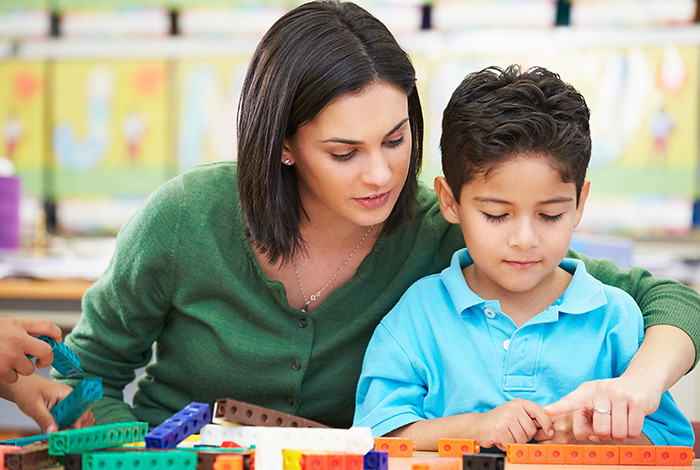Area teachers benefit from professional development

One goal of the the Laboratory's Math and Science Academy is to help area teachers become instructional leaders and future administrators.
Maria Hernandez, a third grade teacher at a Northern New Mexico elementary school, leaves her classroom and walks briskly toward the school library. She carries an armful of papers—student work from the mathematics assessment she gave earlier in the morning.
Hernandez enters the teacher meeting space in the library, where two other teachers and her principal are already seated—each gives her a smile as she joins them at the table. The foursome gets to work reviewing the assessments; members of the team become more relaxed as they are transported into the minds of their students. The collaborative practice informs teachers of their students’ mathematical understanding.
This meeting, during which teachers engage with one another in a professional learning community (PLC) to look at student work, has occurred weekly at this school since early 2013 and is one of many partnerships between area schools and Los Alamos National Laboratory’s Math and Science Academy (MSA).
MSA is a three-year professional development program for teachers that’s designed to support continuous and sustainable improvement of math and science teaching and learning. In addition to year-round support, participating teachers attend a three-week summer institute in which they learn best practices in instruction, assessment, and student engagement. Facilitating collaborative work with teachers is one way MSA helps schools improve student learning and achievement in math and science.

The Math and Science Academy increases teacher content knowledge for teaching math and science.
Three years later, the results at Hernandez’s school are clear: with help from MSA, student achievement scores in mathematics increased, and motivation and engagement amongst the teaching staff also increased.
Data from MSA reports reveal that PLCs have a direct, positive influence on the culture of the school. “One of the biggest things we have right now are our PLCs,” says Hernandez, who went on to discuss how looking at student work as a team provided a wonderful opportunity to share best practices, look into the minds of students, and is essential to designing interventions.
PLCs also help educators better understand one another’s teaching. “We are getting a lot stronger,” says Principal George Roybal. “Through our PLCs, our teachers walk away knowing what other teachers are doing in their classroom.”
Hernandez also describes how PLCs are helping her understand student thinking at a deeper level. “We look at the student work, we really identify what the kids’ understanding of a certain concept is,” she says. “The last PLC in math was exciting to see the level of conversation the whole staff was having; even the teaching assistants were super excited to be there. That was a good day to leave work and feel like…Wow!”
Names were changed for anonymity.






